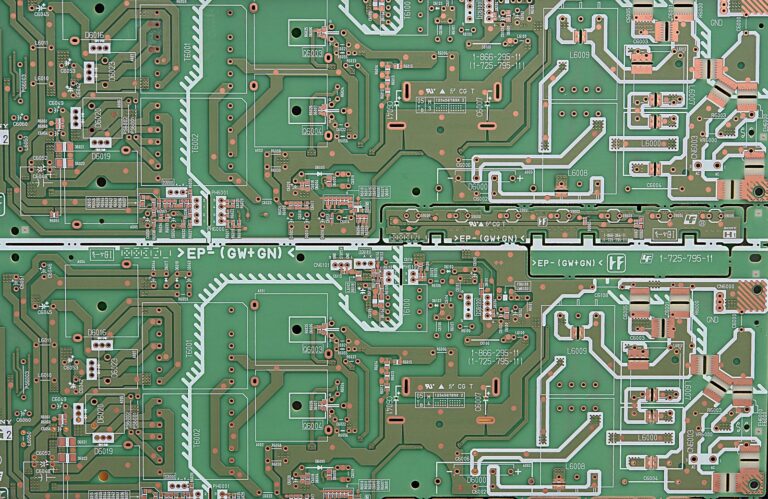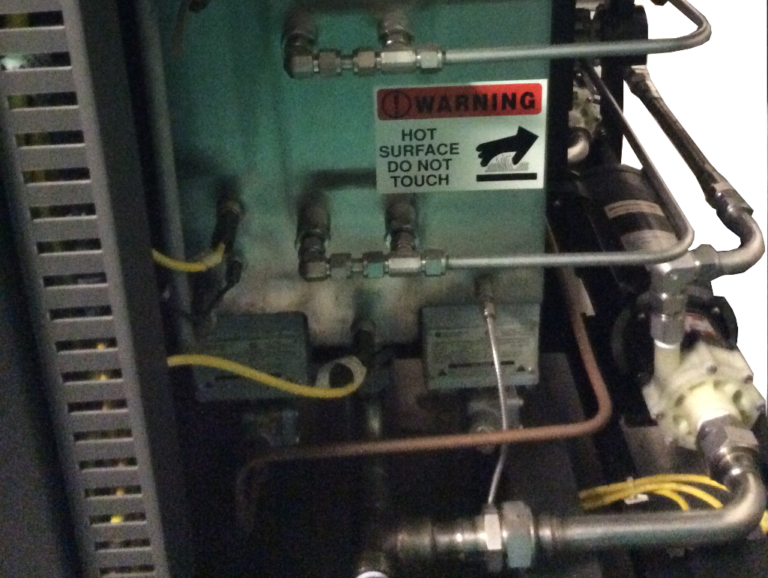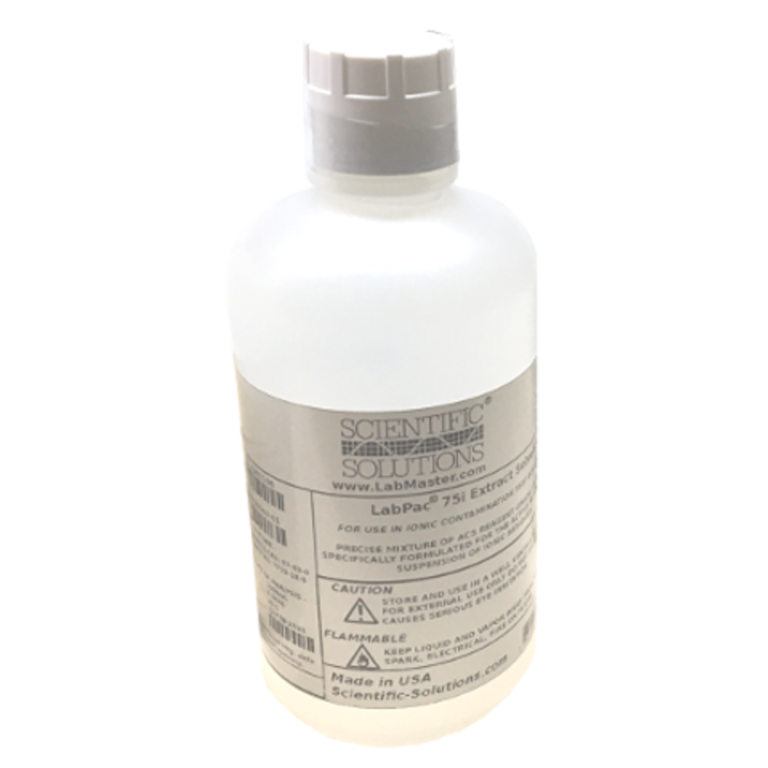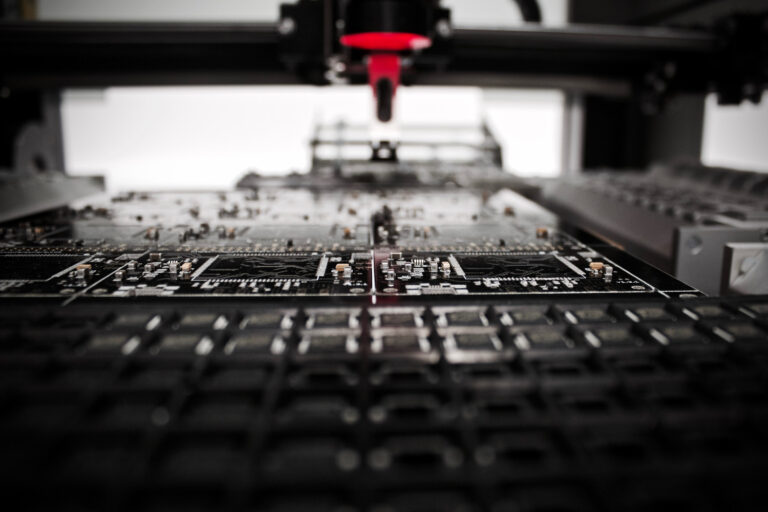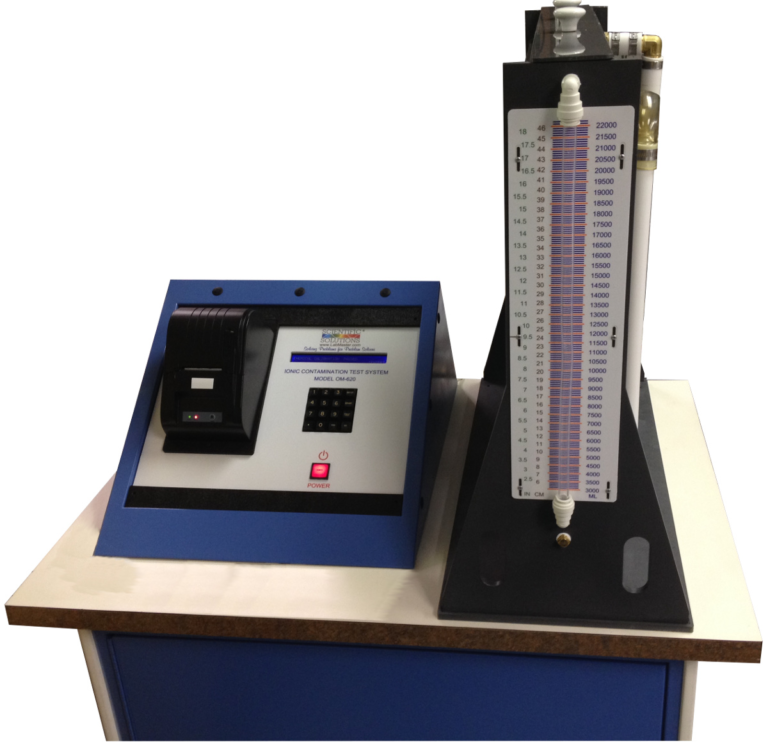What is the ROSE Test?
The Resistivity Of Solvent Extract (ROSE) test is a test for the presence and average concentration of soluble ionic contaminants. The process uses an extracting “Test Solvent” of 75 percent by volume of ACS reagent grade IsoPropyl alcohol (IPA) and 25% by volume of De-Ionized water (D-H2O). The alcohol is used to extract the contaminates and the water holds the contaminate in solution. The sample to be tested is submerged into very clean Test Solvent which is then agitated to promote removal of ionic residue from the sample. The resistivity (reciprocal of conductivity) of the Test Solvent is monitored. Using the sample’s total surface area, the volume of Test Solution, and the resistivity measurements, the level of contamination is calculated.
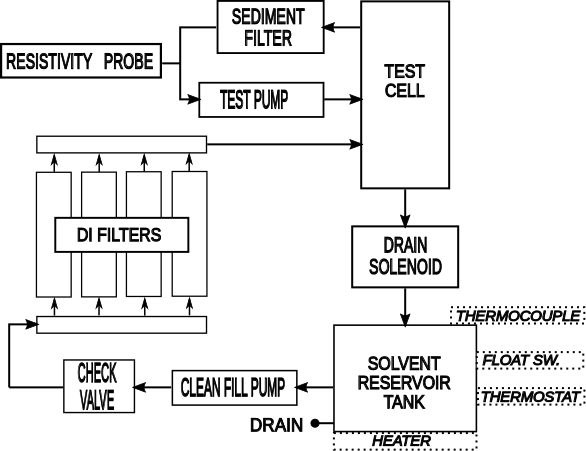
The Process. . .
Refer to the above system diagram. Initially all the Test Solvent is in the Solvent Reservoir Tank and the Test Cell is empty. The next step is commonly referred to as the “Clean Fill” process. The Test Solvent is cleaned by pumping it thru the DI-Columns and into the Test Cell. The DI-Columns contain a mix of resin beads and act like a “filter”, and sometimes are called DI-Filters. This mixture contains both anion (+) and cation(-) and restore the solvent to a non-ionic state.
The Test Pump is used to circulate the Test Solvent thru the Resistivity Probe, where the resistivity of the Test Solvent is measured. The Test Cell returns the Test Solvent to the Reservoir Tank. This continues until the Test Solvent is clean, as determined by a high resistivity measurement. The pumps are then turned off.
The volume of the Test Solvent in the Test Cell is adjusted to a level that will allow complete submersion of the sample. The sample is now placed into the Test Cell and the Test Pump is turned on. The Test Solvent continues to extract the contaminates from the sample until the test is completed. The Test Cell then returns the Test Solvent to the Reservoir Tank, and the total contamination is calculated. The test results are displayed and printed.
The Results . . .
The amount of contamination removed from the sample is calculated using the area of the sample, the volume of Test Solvent, and the change in resistivity of the Test Solvent from the beginning of the test to the end of the test. The contamination value is expressed as “micrograms of equivalent Sodium Chloride per area. This value reflects the contamination extracted from the sample and can be used to determine if the sample had more contamination as allowed per specifications, such as MIL-P-28809, or may be used as a comparison to previous samples to verify your cleaning process is unchanged.
The Consumables . . .

It is a closed loop system with minimal addition of fresh solvent (as needed) to replenish solvent lost thru testing (spillage, evaporation, etc.). The D.I. columns can last for months or years depending upon the amount of usage. After a period of time the cations and anions from the Test Solvent displace all the active hydrogen and hydroxyl groups in the beads and the DI Columns are no longer effective, i.e. can no longer clean the Test Solvent, need to be replaced.


